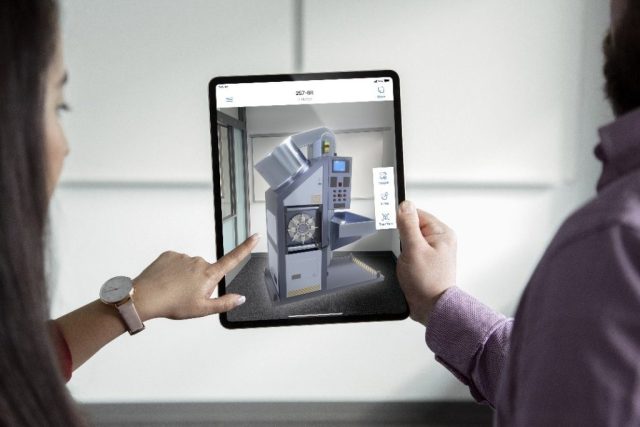
With HoloLens 2's big reveal just around the corner, Microsoft has broadened its augmented-reality (AR) ambitions with new apps for Android and iOS.
Remote Assist is an app designed for service engineers operating in the field, letting them show what they can see to a remote expert, who can then use a mixture of voice and AR drawing and annotation on what they see to provide guidance, troubleshooting, and instruction. This feature is already available for HoloLens and is being used by real service engineers. A preview of Remote Assist is coming to Android; while it won't offer the same hands-free convenience as the HoloLens, it also won't require the $5,000 headsets, instead running on a smartphone.

Product Visualize is a sales app that salespeople can use to show customers the products that they're buying in context, letting them see how big machinery and equipment is, check if it will fit in the space they want to use it, and so on. It's similar to, but simpler than, a HoloLens app called Layout, which similarly allows 3D models to be placed and laid out in the real world. A preview of Visualize is being released for iOS; an Android version may follow, depending on customer demand.
Microsoft says that these apps are shipping because although HoloLens remains an important part of its AR efforts, these smartphones are the devices that people have in their hands right now. The platform choice indicates something of a class divide: the more directly customer-facing salespeople get Apple devices, so a sales-oriented tool ships for iOS first; service engineers instead use Android devices, so their applications ship for Android first.
Both of these apps are being shipped under the Dynamics 365 umbrella and will have integration with Dynamics 365. With this, a Remote Assist user might have instant access to the client's case history and previous service calls, an inventory of all the hardware models that a particular customer has, and even easy connections to sales in case upgrades or replacements are required. These apps are being released in around the same timeframe as the April 2019 updates to Dynamics 365, which will bring further machine learning-driven features such as fraud protection and a system for developing virtual agents for tasks such as front-line customer support.
While HoloLens does have a few games, these apps show that the company's work on AR continues to have an enterprise focus. We're expecting that to continue with HoloLens 2. It should be faster, lighter, and more capable, with a wider field of view and built-in acceleration of both machine learning and holographic processing. We also expect it to continue to attract a multi-thousand-dollar price tag, putting it out of reach of all but the wealthiest consumers.
reader comments
25